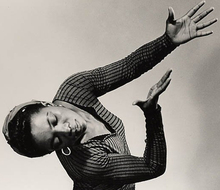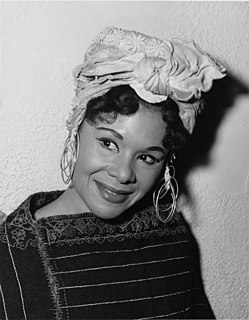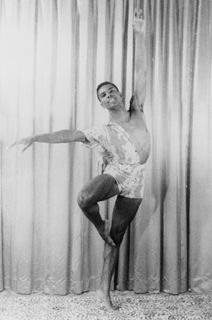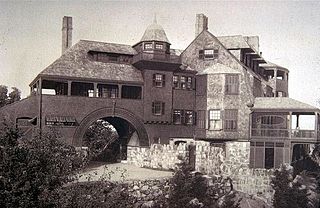
Shingle Springs is a census-designated place (CDP) in El Dorado County, California, United States. The population was 4,432 at the 2010 census, up from 2,643 at the 2000 census. It is located about 40 miles from Sacramento in the Gold Country foothills and sits directly on Highway 50. The towns of Coloma and Placerville are less than 15 miles away.

Richfield Springs is a village located in the Town of Richfield, on the north-central border of Otsego County, New York. The population was 1,264 at the 2010 census. The name is derived from some local sulfur springs.

Salsa is a popular form of social dance originating from Cuban folk dances. The movements of Salsa are a combination of Afro-Cuban dance, Son, cha-cha-cha, mambo and other dance forms. The dance, along with salsa music, saw major development in the mid-1970s in New York. Different regions of Latin America and the United States have distinct salsa styles of their own, such as Cuban, Puerto Rican, Cali Colombia, L.A. and New York styles. Salsa dance socials are commonly held in night clubs, bars, ballrooms, restaurants, and outside, especially when part of an outdoor festival.

Latin dance is a general label, and a term in partner dance competition jargon. It refers to types of ballroom dance and folk dance that originated in Latin America.

Alvin Ailey was an African-American choreographer and activist who founded the Alvin Ailey American Dance Theater and the Ailey School in New York City. He is credited with popularizing modern dance and revolutionizing African-American participation in 20th-century concert dance. His company gained the nickname "Cultural Ambassador to the World" because of its extensive international touring. Ailey's choreographic masterpiece Revelations is believed to be the best known and most often seen modern dance performance. In 1977, Ailey was awarded the Spingarn Medal from the NAACP. He received the Kennedy Center Honors in 1988. In 2014, President Barack Obama selected Ailey to be a posthumous recipient of the Presidential Medal of Freedom.

Donald Cortez Cornelius was an American television show host and producer who was best known as the creator of the nationally syndicated dance and music show Soul Train, which he hosted from 1971 until 1993. Cornelius sold the show to MadVision Entertainment in 2008.
There is great variety in dance in the United States of America. It is the home of the hip hop dance, tap dance and its derivative Rock and Roll, and modern square dance and one of the major centers for modern dance. There is a variety of social dance and concert or performance dance forms with also a range of traditions of Native American dances.

Pearl Eileen Primus was an American dancer, choreographer and anthropologist. Primus played an important role in the presentation of African dance to American audiences. Early in her career she saw the need to promote African dance as an art form worthy of study and performance. Primus' work was a reaction to myths of savagery and the lack of knowledge about African people. It was an effort to guide the Western world to view African dance as an important and dignified statement about another way of life.

Katherine Mary Dunham was an African-American dancer, choreographer, author, educator, anthropologist, and social activist. Dunham had one of the most successful dance careers in African-American and European theater of the 20th century, and directed her own dance company for many years. She has been called the "matriarch and queen mother of black dance."
African-American culture, also known as Black American culture, refers to the contributions of African Americans to the culture of the United States, either as part of or distinct from mainstream American culture. The distinct identity of African-American culture is rooted in the historical experience of the African-American people, including the Middle Passage. The culture is both distinct and enormously influential on American and global worldwide culture as a whole.

Arthur Mitchell was an American ballet dancer, choreographer, and founder and director of ballet companies. In 1955, he was the first African-American dancer with the New York City Ballet, where he was promoted to principal dancer the following year and danced in major roles until 1966. He then founded ballet companies in Spoleto, Washington, D.C., and Brazil. In 1986, he founded a training school and the first African-American classical ballet company, Dance Theatre of Harlem. Among other awards, Mitchell was recognized as a MacArthur Fellow, inducted into the National Museum of Dance's Mr. & Mrs. Cornelius Vanderbilt Whitney Hall of Fame, and received the United States National Medal of Arts and a Fletcher Foundation fellowship.
African-American dance has developed within Black American communities in everyday spaces, rather than in studios, schools or companies. These dances are usually centered on folk and social dance practice, though performance dance often supplies complementary aspects to this. Placing great value on improvisation, these dances are characterized by ongoing change and development. There are a number of notable African-American modern dance companies using African-American cultural dance as an inspiration, among these are the Whitey's Lindy Hoppers, Alvin Ailey American Dance Theater, Dance Theatre of Harlem, and Lula Washington Dance Theatre. Unlike European-American dance, African-American dance was not taxed in the fields of Europe where it began and has not been presented in theatrical productions by generations of kings, tzars, and states. Instead, it lost its best dancers to the draft and started requiring taxes from establishments in the form of a federal excise tax on dance halls enacted in 1944. Dance halls continue to be taxed throughout the country while dance studios are not, and African-American dance companies statistically receive less taxpayer money than European Americans. However, Hollywood and Broadway have provided opportunities for African-American artists to share their work and for the public to support them. Michael Jackson and Beyoncé are the most well-known African-American dancers.

Solar shingles, also called photovoltaic shingles, are solar panels designed to look like and function as conventional roofing materials, such as asphalt shingle or slate, while also producing electricity. Solar shingles are a type of solar energy solution known as building-integrated photovoltaics (BIPV).
The Harlem Renaissance was an intellectual, social, and artistic explosion that took place in Harlem, New York, spanning the 1920s. During the time, it was known as the "New Negro Movement", named after The New Negro, the 1925 anthology edited by Alain Locke. The Movement also included the new African-American cultural expressions across the urban areas in the Northeast and Midwest United States affected by the African-American Great Migration, of which Harlem was the largest. The Harlem Renaissance was considered to be a rebirth of African-American arts. Though it was centered in the Harlem neighborhood of the borough of Manhattan in New York City, many francophone black writers from African and Caribbean colonies who lived in Paris were also influenced by the Harlem Renaissance.

The Shingle style is an American architectural style made popular by the rise of the New England school of architecture, which eschewed the highly ornamented patterns of the Eastlake style in Queen Anne architecture. In the Shingle style, English influence was combined with the renewed interest in Colonial American architecture which followed the 1876 celebration of the Centennial. The plain, shingled surfaces of colonial buildings were adopted, and their massing emulated.

In the United States, Queen Anne-style architecture was popular from roughly 1880 to 1910. "Queen Anne" was one of a number of popular architectural styles to emerge during the Victorian era. Within the Victorian era timeline, Queen Anne style followed the Stick style and preceded the Richardsonian Romanesque and Shingle styles.

A shingle weaver (US) or shingler (UK) is an employee of a wood products mill who engages in the creation of wooden roofing shingles or the closely related product known as "shakes." In the Pacific Northwest region of the United States, historically the leading producer of this product, such shingles are generally made of Western Red Cedar, an aromatic and disease-resistant wood indigenous to the area. The use of the term "weaver" for a shingle maker related to the way in which the workers fitted the shingles together in bundles but the meaning has extended to anyone who works in a shingle mill.
















